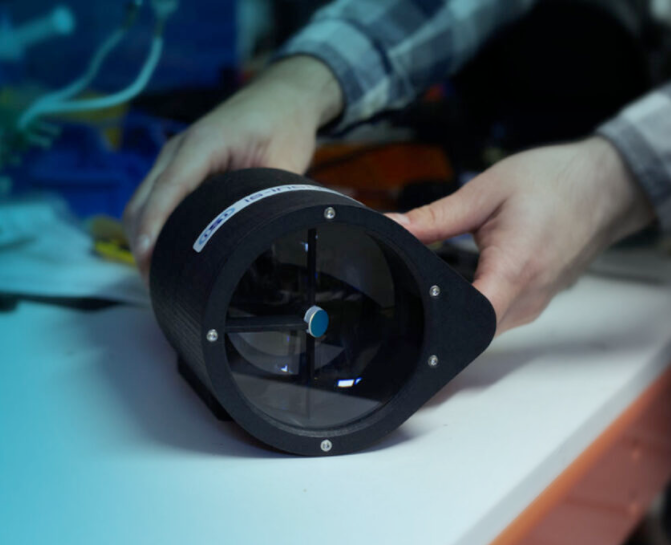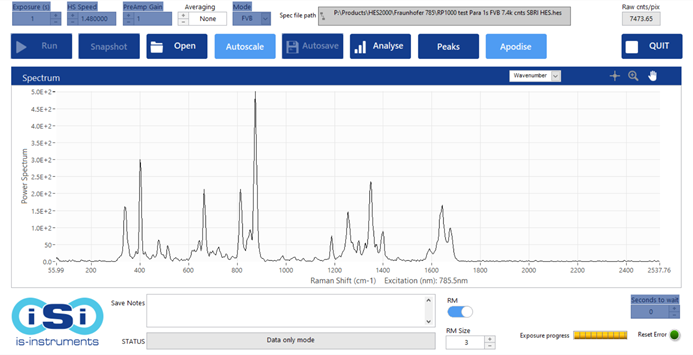This product page offers better insights into Standard and Stand-Off Raman probes from IS-Instruments.
Raman Probes
Raman probes are specifically developed for coupling with HES spectrometers for Raman observations.
Standard and Stand-Off Raman Probes
When the size of a sample seems to be large, in a risky or high-temperature setting, or for any reason, it is hard to bring to a spectrometer, a probe offers the perfect solution for obtaining real-time observations.
As far as Raman spectrometers are concerned, a Raman probe is utilized to quantify the inelastic scattering of light observed from a sample. Raman scattering is generated when the energy levels of photons are shifted up or down due to excitation by a monochromatic source (generally a laser).
The variation in vibrational frequency is utilized to identify the composition of a target substance. A Raman probe concentrates the laser on the sample, gathers the scattered light and then feeds it back to the spectrometer.
The Raman probes are perfectly suited for coupling with IS-Instruments’ range of high etendue HES spectrometers. The company now provides two probes: the Standard Raman Probe developed for close or contact measurements, or the Stand-Off Raman Probe with the ability to make measurements from a distance of up to 3 m.

Image Credit: IS-Instruments
Product Specifications
Stand-Off Raman Probe Specification
Listed below are the specifications given for the standard RP1000, but the unit is adaptive to function ranging between 500 and 1500 mm stand-off distances. It can also be adapted to function at alternative Raman excitation wavelengths.
Table 1. Source: IS-Instruments
| Feature |
Detail |
| Raman operating λ |
785 nm |
| Configuration |
Mirrored obscuration and lens combination confocal |
Stand-off distance
(from 100 mm diameter window) |
1000 mm |
| Laser fiber connection |
FC/PC |
| Spectrometer fiber connection |
SMA |
| Dimensions |
L: 360 mm (inc. fiber gland) Max W: 140 mm |
| Mass |
~ 1.8 kg |
The fiber-coupled RP1000 Raman probe has been developed to work with the HES2000 spatial heterodyne Raman spectrometer. The probe functions at a 1000 mm stand-off distance from the 100 mm diameter window, thus enabling non-destructive investigation of target samples to arrest material-specific Raman spectra.
Applications
- Quality control can be performed during steelmaking processes
- Deployment in nuclear settings
- Composition monitoring in ceramics
- Identification of liquids in pressurized gas pipelines
- Determining multiple gas species in gas pipelines
RP1000 Raman Probe for Stand-Off Measurements
IS-Instruments’ Stand-Off Raman probe has the potential to make measurements ranging from distances of up to 3 m from the target. The Stand-Off Raman Probes are equipped with the highest quality optical filters to inhibit any undesirable laser and have focal lengths ranging from 50 mm up to 3 m.
These probes have been developed to operate smoothly with the ISI range of HES spectrometers with etendue characteristics to match and have been designed to reduce undesirable background light. This enables optimum light collection, even at distance.
The company’s Stand-Off Raman probe can be attached to a robotic arm for deployment by ROV, which is perfect for remote sensing in dangerous settings. The Raman probe is at present being utilized in the nuclear decommissioning sector to eliminate the human element from the detection of substances in gloveboxes.
Front Panel Features
- Continuous frame and single frame capture options are available
- Frame averaging
- Comes with FVB/2D modes
- Spectra overlay function
- Image, FFT and spectrum display options
- Peak labeling is offered
- Dark image subtraction

Spectra shown was captured in 1 second using a HES2000 Raman spectrometer coupled to an RP1000 Raman probe via a 0.22NA 910 µm optical fiber. A 105 µm fiber-coupled PDLD 500 mW, 785 nm laser was used to excite the target paracetamol tablet sample. Image Credit: IS-Instruments
Standard Raman Probe
The fiber-coupled RP50 Raman probe has been developed to function with the HES2000 spatial heterodyne spectrometer. The probe functions at a 2 mm stand-off distance from the enclosure aperture and enables non-destructive investigation of target samples to collect material-specific Raman spectra.
The specifications given below are for the standard RP50. Users can get in touch for more details or customization options such as alternative Raman excitation operating wavelengths.

Image Credit: IS-Instruments
RP50 – Standard Raman Probe
Table 2. Source: IS-Instruments
| Feature |
Detail |
| Raman operating λ |
785 nm |
| Configuration |
Dichroic mirror-based confocal |
Stand-off distance
(from enclosure aperture) |
25 mm |
| Laser fiber connection |
FC/PC |
| Spectrometer fiber connection |
SMA |
| Dimensions |
160 x 100 x 50 mm |
| Mass |
<500 g |
Front Panel Features

Image Credit: IS-Instruments
- Continuous frame and single frame capture options are available
- Spectra overlay function
- Comes with FVB/2D modes
- Image, FFT and spectrum display options
- Dark image subtraction
- Peak Labeling
- Frame averaging